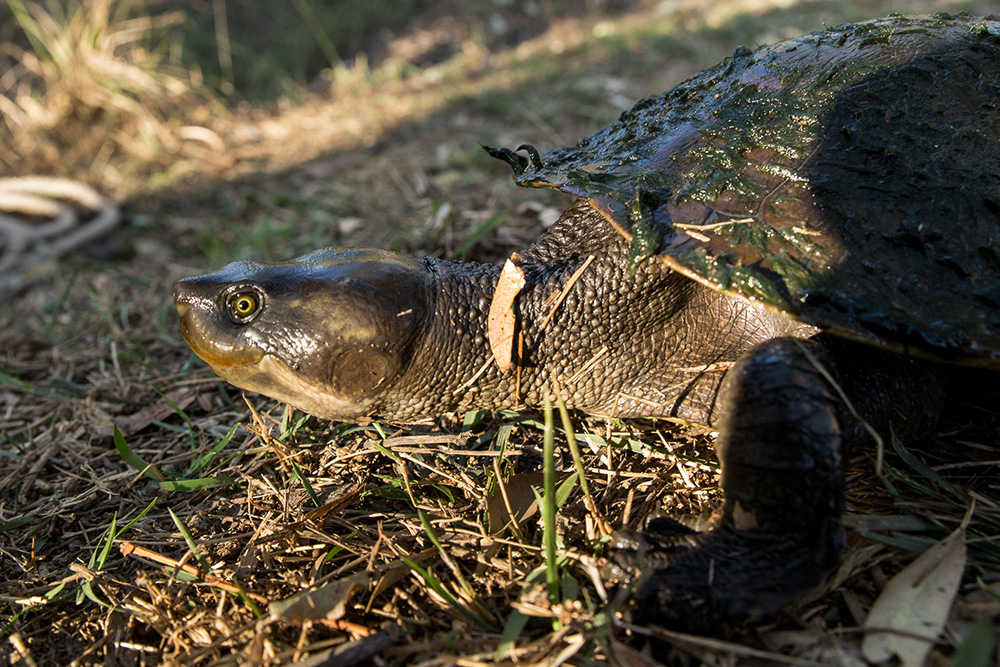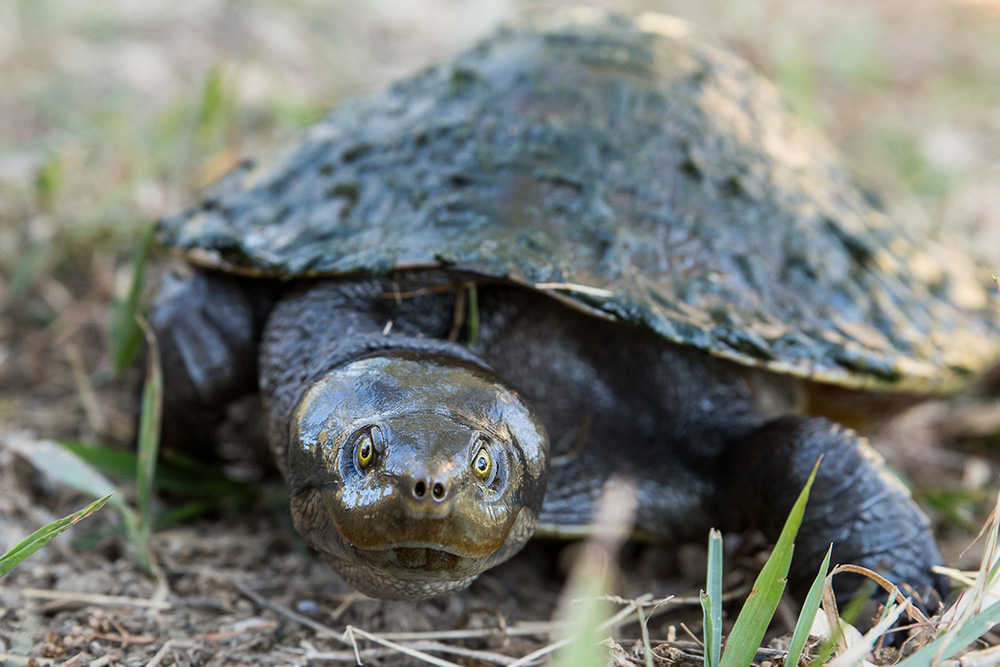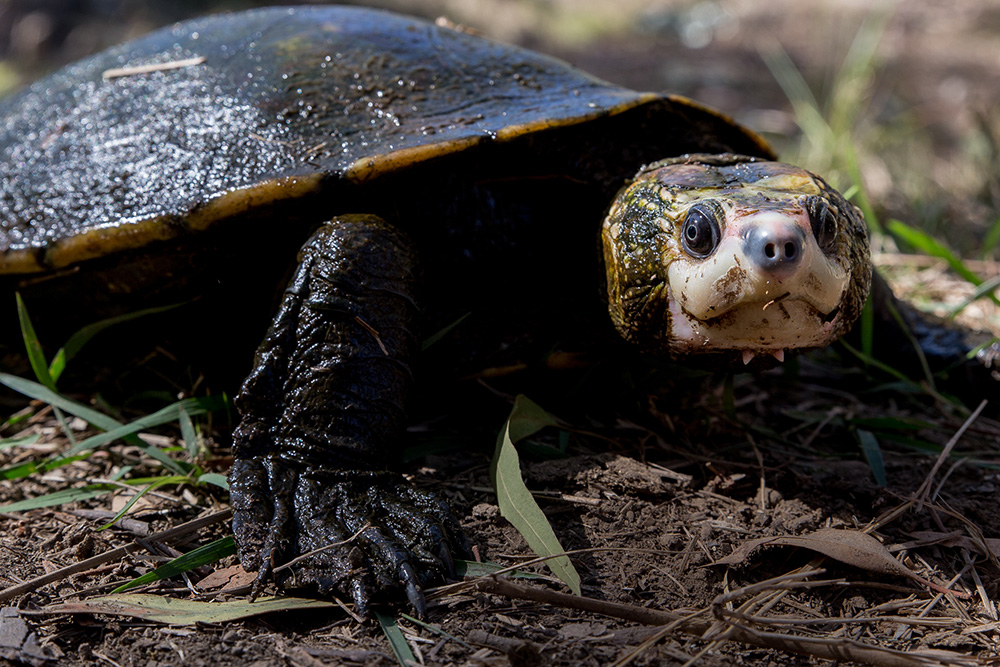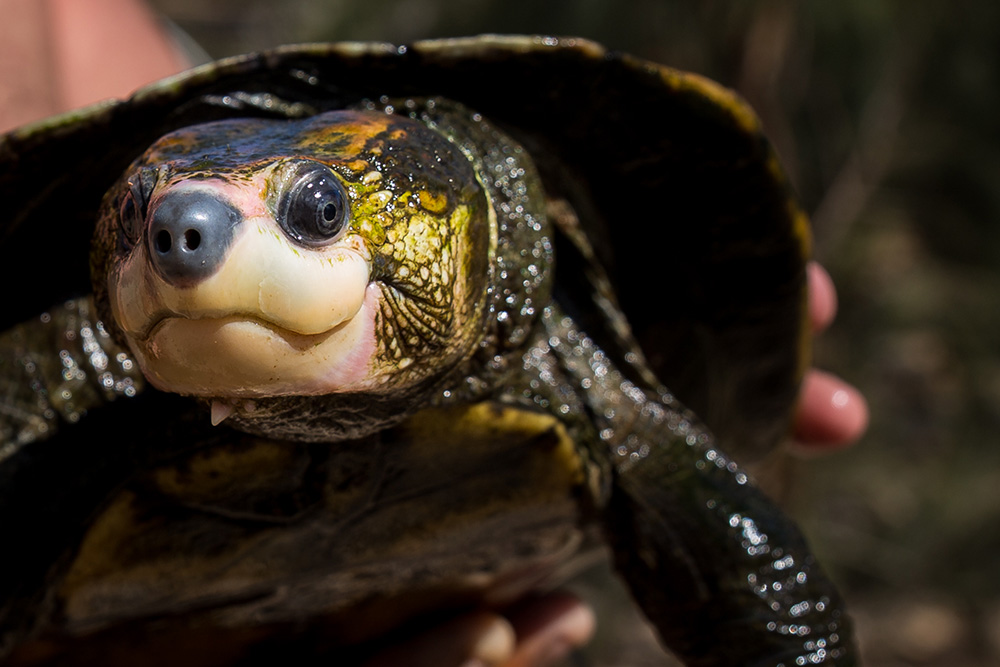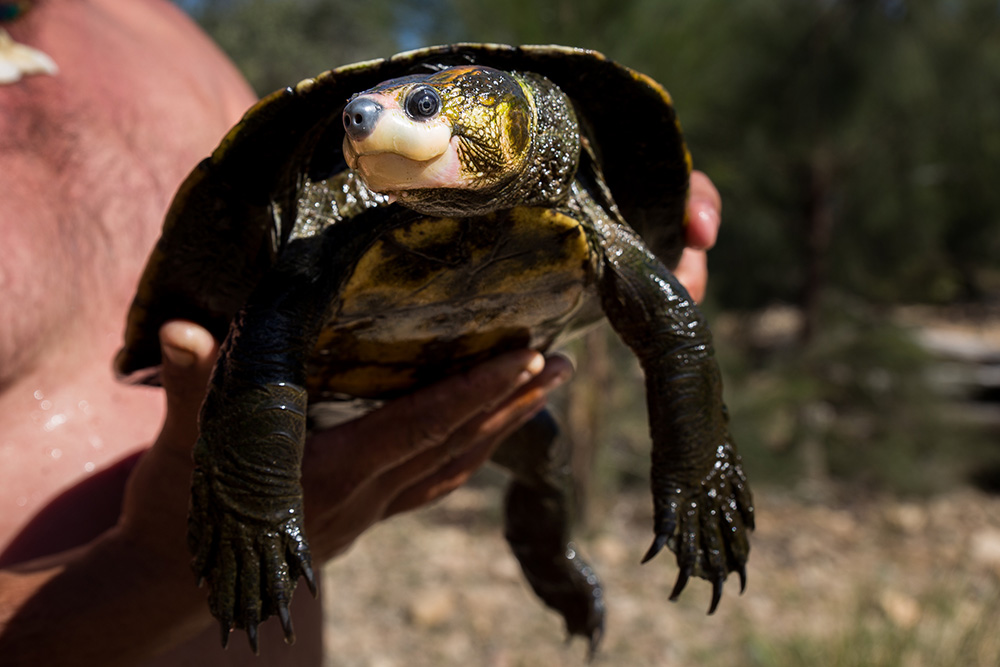Elseya Irwini – Irwin’s turtle
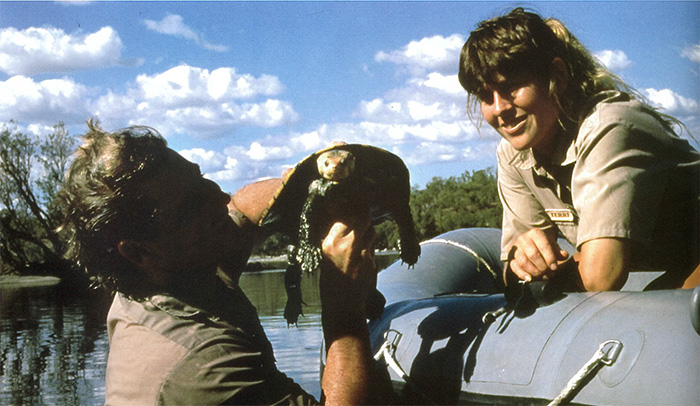
Image: A young Steve and Terri Irwin on the Burdekin River with one of the first Elseya irwini found (caught and photographed Bob irwin). 3
Elseya irwini, Irwin’s turtle or the fresh water snapping turtle
First discovered in 1990 by Australian environmental icons Bob Irwin and his late son Steve Irwin. The turtle is endemic to the Broken-Bowen River system, which flows through Urannah, with an estimated range of only 25km1. The first and only males were found at Urannah, at the mouth of the Broken River and Urannah Creek catchments.
The species is large, short-necked, and with a yellowish-white head. Like other related species in the Elsyea group, Irwin’s turtle is a cloacal respirator i.e. it breaths through it’s bum. Irwin’s turtle lives in specialised habitat, with clear, well oxygenated water, with continuous flow. Urannah contains the most permanent river in the Burdekin River System, which means that Urannah is likely very important habitat for the turtle.
Surveys have found 100 individuals across it’s range. It is estimated, based on range and habitat needs, that the species numbers 5000 individuals. Surveys found a lot ratio of juveniles to adults, and a low ratio of males to females. Scientists have stated that this imbalance in the sexes and the low number of juveniles makes the turtle vulnerable to rapid decline and loss.
The species specialised habitat requirements also makes Irwin’s turtle vulnerable to declines in habitat range and habitat quality. Turtles which breathe out of their anus, including Irwin’s turtle, are thought to be the most vulnerable to damming and water management projects, since high water quality is so vital.The Burdekin Dam, built in 1987, is thought to have led to habitat loss and population decline.
The Threatened Species Scientific Committee states that there is evidence that the extent of occurrence of Irwin’s Turtle has contracted and is very restricted due to water management works. 1 It is considered by the Threatened Species Scientific Committee that the construction of Urannah Dam would negatively impact on the species. 1 Elseya Irwini is part of ongoing biological research investigating the impacts of infrastructure projects and water management on turtle species which breed bimodaly (through their mouth and anus) 2. The research will hopefully help inform and improve policy decisions, and help protect the turtle and it’s habitat.
When the conservation status of E. irwini was assessed under the Environment Protection and Biodiversity Conservation Act (1999), it was regarded that there was too little information to be able to list the turtle under any category.1 However, the Threatened Species Scientific Committee did state that the species restricted range and demographic characteristics suggest that the population may collapse.1
The fresh water species Elseya irwini needs further study, as we currently know very little about this turtle. The current evidence suggests that the species is of conservation concern and is highly vulnerable to further developments in it’s habitat range, and therefore needs protection.
Hunt for the Irwin’s Turtle
Webinar
ason Schaffer is a freshwater ecologist with a special interest in turtles. He will present on the work that has been done to improved scientific knowledge of Irwin’s Turtle.
Dr Cecilia Villacorta Rath is a researcher at James Cook University. She is developing techniques to understand the ecology of species in marine and freshwater systems by searching for DNA in the environment.
Irwin’s turtle to be in trouble if Urannah Dam development goes ahead
7News Mackay
Mackay conservationists say the elusive Irwin’s turtle will be in trouble if the Urannah Dam development goes ahead. The turtles are only found in the Broken Bowen River, because they need the pristine waters to survive.
References
- Threatened Species Scientific Committee. 2009. Elseya irwini (Irwin’s Turtle) Listing Advice. Available at: http://www.environment.gov.au/system/files/pages/1cd5c5bd-d9b8-4b5f-ada6-c53f050dfa81/files/78961-listing-advice.pdf
- TropWATER – Tropical Water and Aquatic Ecosystem Research. Effects of river regulation and activity patterns of bimodally respiring freshwater turtles. Available at: https://research.jcu.edu.au/tropwater/research-programs/freshwater-ecology-1/freshwater-fauna-1/potential-effects-of-river-regulation-on-movement-and-activity-patterns-of-bimodally-respiring-freshwater-turtles
- Freshwater Turtles of Australia; By John Cann, Ross Sadlier; ISBN: 9781486308248
https://www.booktopia.com.au/freshwater-turtles-of-australia-john-cann/book/9781486308248.html
Links
We need your help
to protect our river, our environment and our culture
"We are the River People our river is sacred it is our life it gives us the connection to our land and the beginning of creation.
It is our duty to protect our BIRI (river) against the rapid demand of water supplies to the Mining Industry in the Bowen Basin. Urannah Creek and Broken River are the last wild rivers in this country and the biodiversity and the environment is untouched.” Descendant Wiri and Birri people.
We will be launching our campaign soon to build the people power to stop this dam.
Please signup for email updates and we will let you know how to get involved and support the River People.

